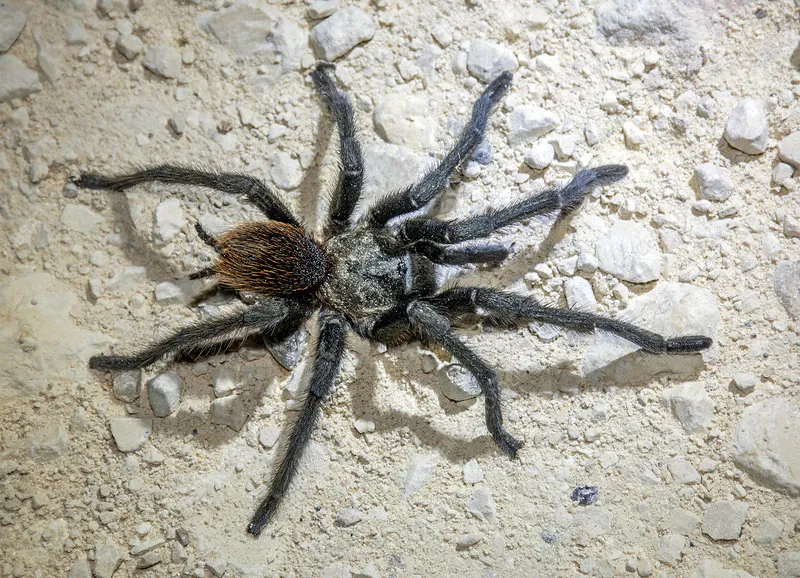What are Tarantulas?
Tarantulas, belonging to the Theraphosidae family, are large, hairy spiders known for their impressive size and often intimidating appearance. These fascinating creatures are found across the globe, thriving in diverse habitats. They are primarily nocturnal hunters, using their fangs to inject venom into their prey. Their life cycle involves molting, where they shed their exoskeleton to grow. Tarantulas are not typically aggressive towards humans but will defend themselves if threatened. They play a crucial role in their ecosystems by controlling insect populations. With their unique characteristics and behaviors, tarantulas continue to captivate the interest of scientists and nature enthusiasts alike. This article will delve into the specific aspects of tarantulas found in Central Texas, offering valuable insights into their world.
Types of Tarantulas in Central Texas
Central Texas is home to several species of tarantulas, each with its distinct characteristics and behaviors. Understanding the specific types you might encounter is essential for appreciating these creatures. Two of the most commonly observed species are the Texas Brown Tarantula and the Texas Tan Tarantula. These spiders, while sharing some similarities, exhibit unique features that set them apart. The Texas Brown Tarantula is often more robust, while the Texas Tan Tarantula tends to have a lighter coloration. Identifying these species correctly can enhance your observation experience and provide a deeper understanding of their ecological roles.
Texas Brown Tarantula
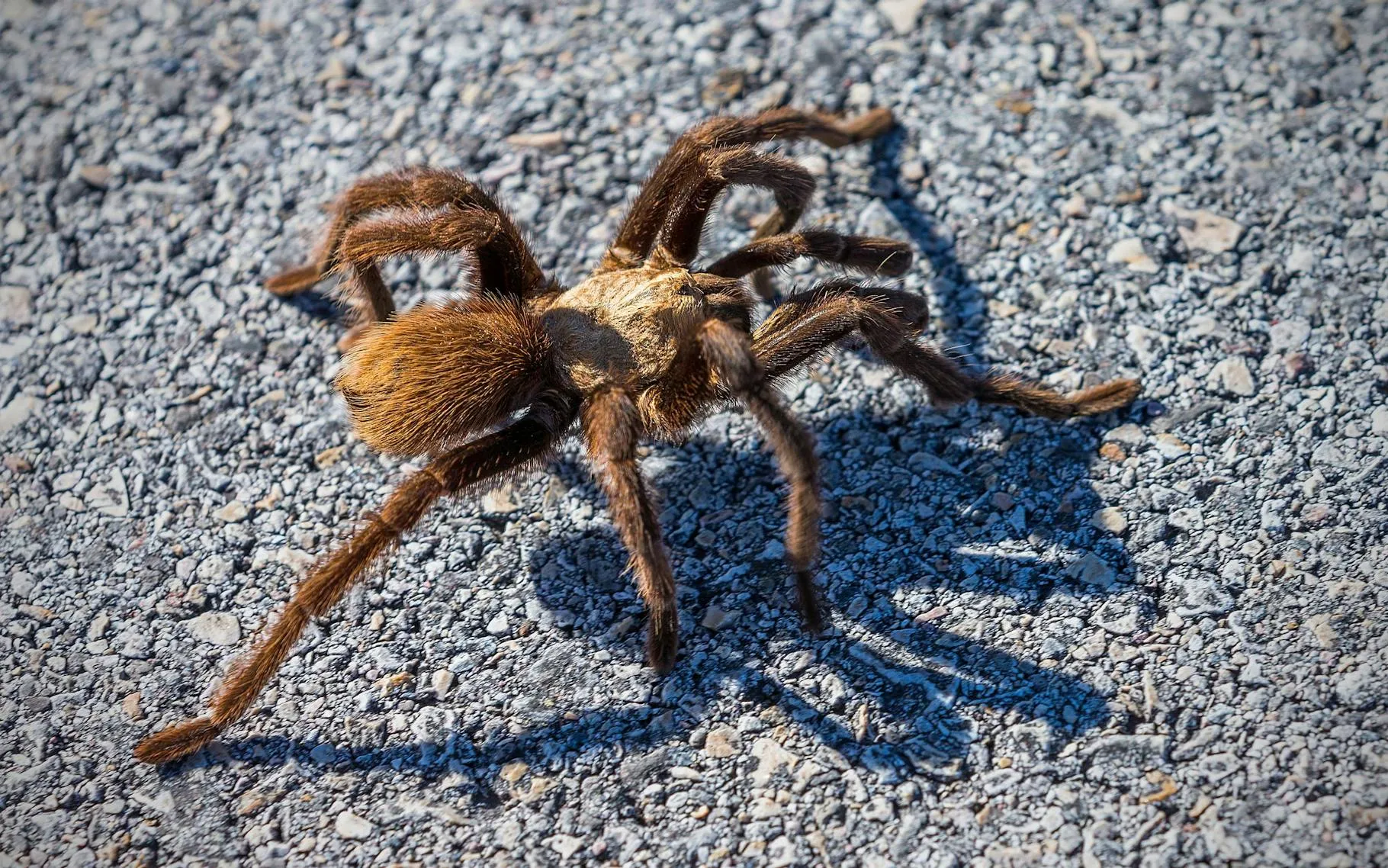
The Texas Brown Tarantula (Aphonopelma hentzi) is one of the most commonly seen tarantulas in Central Texas. Known for its relatively large size and dark brown coloration, this species is a sight to behold. They typically have a lifespan of several years, with females living much longer than males. During the mating season, male Texas Brown Tarantulas actively search for females, often traveling long distances. These tarantulas are primarily ground-dwelling, constructing burrows in the soil or utilizing natural shelters. Their diet consists of insects, small reptiles, and occasionally, small mammals. They are generally docile but can bite if provoked, though their venom is not considered highly dangerous to humans.
Texas Tan Tarantula
The Texas Tan Tarantula (Aphonopelma anax) presents a lighter color than the Texas Brown Tarantula. These tarantulas share many behavioral traits with the Texas Brown Tarantula but can be identified by their tan or lighter brown coloration. They are also ground-dwelling spiders, constructing burrows in the soil or using existing shelters. Their size is comparable to the Texas Brown Tarantula, and they have similar lifespans. Like the Texas Brown, they are primarily nocturnal hunters and feed on a variety of insects and small animals. They are generally not aggressive but will defend themselves if they feel threatened. Observing both the Texas Brown and Tan Tarantulas provides a fascinating glimpse into the diversity of tarantulas in Central Texas.
Where to Find Tarantulas in Central Texas
Knowing where to look can significantly increase your chances of spotting a tarantula in Central Texas. These spiders prefer specific habitats, making it easier to locate them. They are commonly found in open grasslands, scrublands, and lightly wooded areas. Look for burrows, which are often the entrances to their underground homes, in areas with well-drained soil. The edges of fields, along roadsides, and in areas with sparse vegetation are all good places to start your search. Remember to observe from a distance and avoid disturbing their habitat. Patience is key, as tarantulas can be elusive creatures, especially during the day. The best time to find them is often during the early morning or late evening hours.
Ideal Habitats
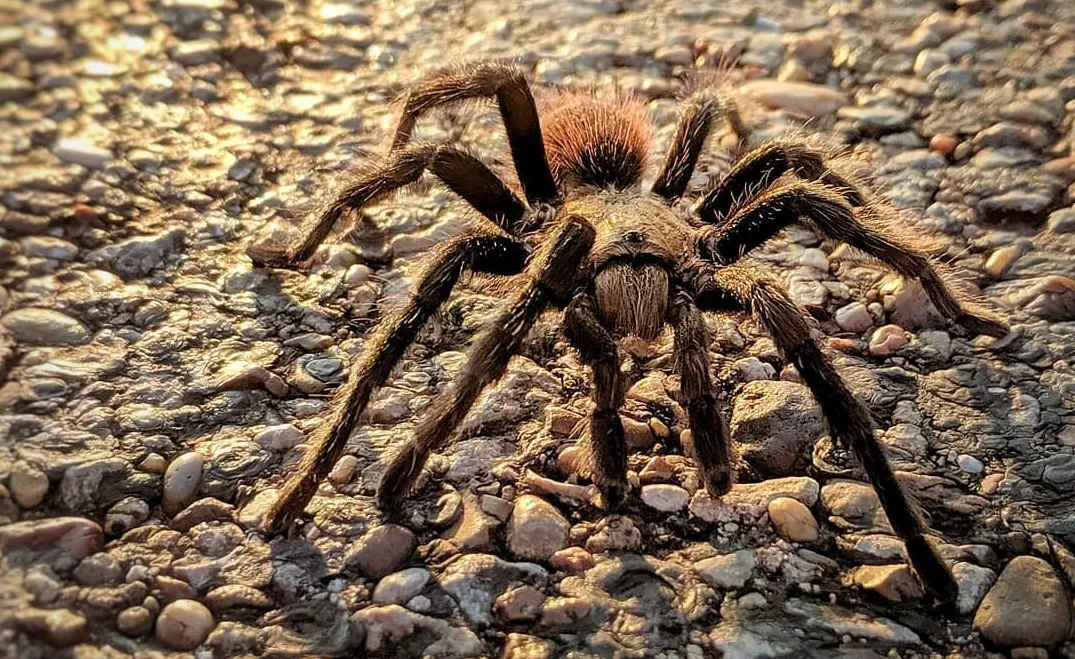
Tarantulas thrive in specific habitats, and understanding these preferences can greatly enhance your search. They prefer well-drained soil to construct their burrows, which protect them from the elements and potential predators. Areas with a mix of grasses, shrubs, and occasional rocks provide excellent cover and hunting grounds. They are often found in areas where insects, their primary food source, are abundant. Avoiding areas that have been heavily treated with pesticides is also advisable, as these can negatively affect tarantula populations. Preserving these habitats is critical for the tarantulas’ survival. Ideal habitats are crucial to the tarantulas’ survival in Central Texas.
Seasonal Activity
The best time to observe tarantulas in Central Texas is during their mating season, typically in the late summer and early fall. During this period, male tarantulas become highly active as they search for females. This is when you’re most likely to see them out and about, often crossing roads or open areas. The activity level of tarantulas is also influenced by the weather conditions. They are more likely to be seen after rain, when their burrows may flood, or during cooler evenings. Understanding these seasonal patterns can significantly improve your chances of seeing these amazing creatures. Knowing the best times to observe tarantulas enhances the experience.
What Do Tarantulas Eat?
Tarantulas are primarily carnivorous, feeding on a variety of prey they can capture. Their diet mainly consists of insects, such as crickets, grasshoppers, and beetles. They are opportunistic hunters and will also feed on larger prey like small lizards, rodents, and other spiders if the opportunity arises. The size of the prey they consume often depends on their own size and age. Tarantulas use their fangs to inject venom into their prey, which immobilizes and begins the digestion process. After injecting the venom, the tarantula will use its chelicerae (mouthparts) to grind up the prey, consuming the liquefied remains. They can survive for extended periods without food, making them well-adapted to the often-harsh conditions of Central Texas.
Feeding Habits

Tarantulas are ambush predators, meaning they often wait for their prey to come to them. They typically hunt at night, when their prey is most active. When an insect or other potential meal wanders within striking distance, the tarantula quickly attacks, injecting venom to paralyze its victim. They have excellent sensory abilities, detecting vibrations and movements that indicate the presence of potential prey. They also use silk to line their burrows, which helps them sense the movements of potential prey. Their feeding habits and hunting style are fascinating adaptations that help them survive in their natural environment. Understanding their feeding habits is critical for their survival in Central Texas.
Predators of the Tarantula
Tarantulas, despite their size and imposing appearance, face predation from various animals. Their primary predators include birds of prey, such as hawks and owls, which can spot them from above. Larger mammals like coyotes and skunks will also prey on them, digging into their burrows to get at them. Some reptiles, such as lizards and snakes, can also pose a threat, especially to smaller tarantulas. Even other tarantulas, particularly larger females, may prey on smaller males. The constant threat of predation shapes tarantula behavior, influencing their habitat choices and defensive strategies. Their survival depends on their ability to evade predators. Protecting tarantulas from predators is a key to their conservation.
Are Central Texas Tarantulas Dangerous?
While tarantulas may look intimidating, they are generally not considered highly dangerous to humans. Their venom is typically not potent enough to cause serious harm, with the effects often being similar to a bee sting. The greatest risk comes from their fangs, which can cause a painful bite. However, tarantulas are generally docile and only bite when they feel threatened or provoked. They often prefer to flee rather than fight. The bites are not usually life-threatening, but they can be painful and cause local swelling and discomfort. It’s essential to respect their space and avoid handling them unless absolutely necessary. Always prioritize the tarantulas’ safety and yours.
Tarantula Bites
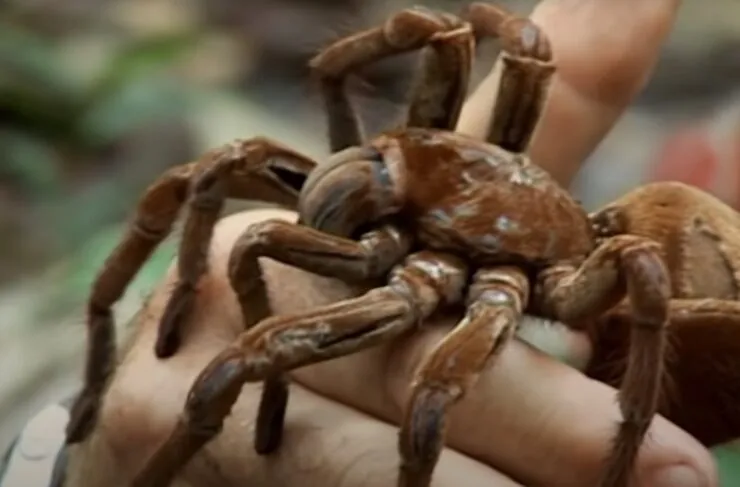
If bitten by a tarantula, the bite will likely be painful and may cause localized swelling, redness, and itching. While the venom is not highly toxic, the bite itself can be unpleasant. It is essential to clean the bite area thoroughly with soap and water to prevent infection. Applying a cold compress can help reduce swelling and pain. Avoid scratching the bite, as this can increase the risk of infection. Seek medical attention if you experience severe symptoms such as difficulty breathing, dizziness, or a rapid heartbeat. Usually, a tarantula bite is manageable at home, but you should be aware of the potential risks.
Tarantula Venom
Tarantula venom is a complex mixture of toxins that serve to immobilize and start the digestion of the prey. The venom is not typically dangerous to humans but can still cause local effects. The composition of the venom varies between species, with some species having more potent venom than others. The effects of a tarantula bite are usually short-lived, with symptoms resolving within a few hours or days. The venom’s primary purpose is to subdue prey, and it has not evolved to be a significant threat to larger animals like humans. Research on tarantula venom is ongoing, and scientists continue to discover its complex components and effects. The study of tarantula venom is a fascinating area of science.
How to Interact with Tarantulas
If you encounter a tarantula in the wild, the best approach is to observe it from a safe distance. Avoid touching or attempting to handle it, as this can provoke the spider and increase the risk of a bite. If you need to relocate a tarantula, it’s best to contact a local wildlife expert for guidance. It is crucial to respect their space and avoid disrupting their habitat. When taking photos, use a long-range lens to capture images without getting too close. By following these guidelines, you can safely appreciate these remarkable creatures. Always prioritize the tarantula’s well-being and ensure that your interactions do not cause any harm.
Observing Tarantulas in Nature
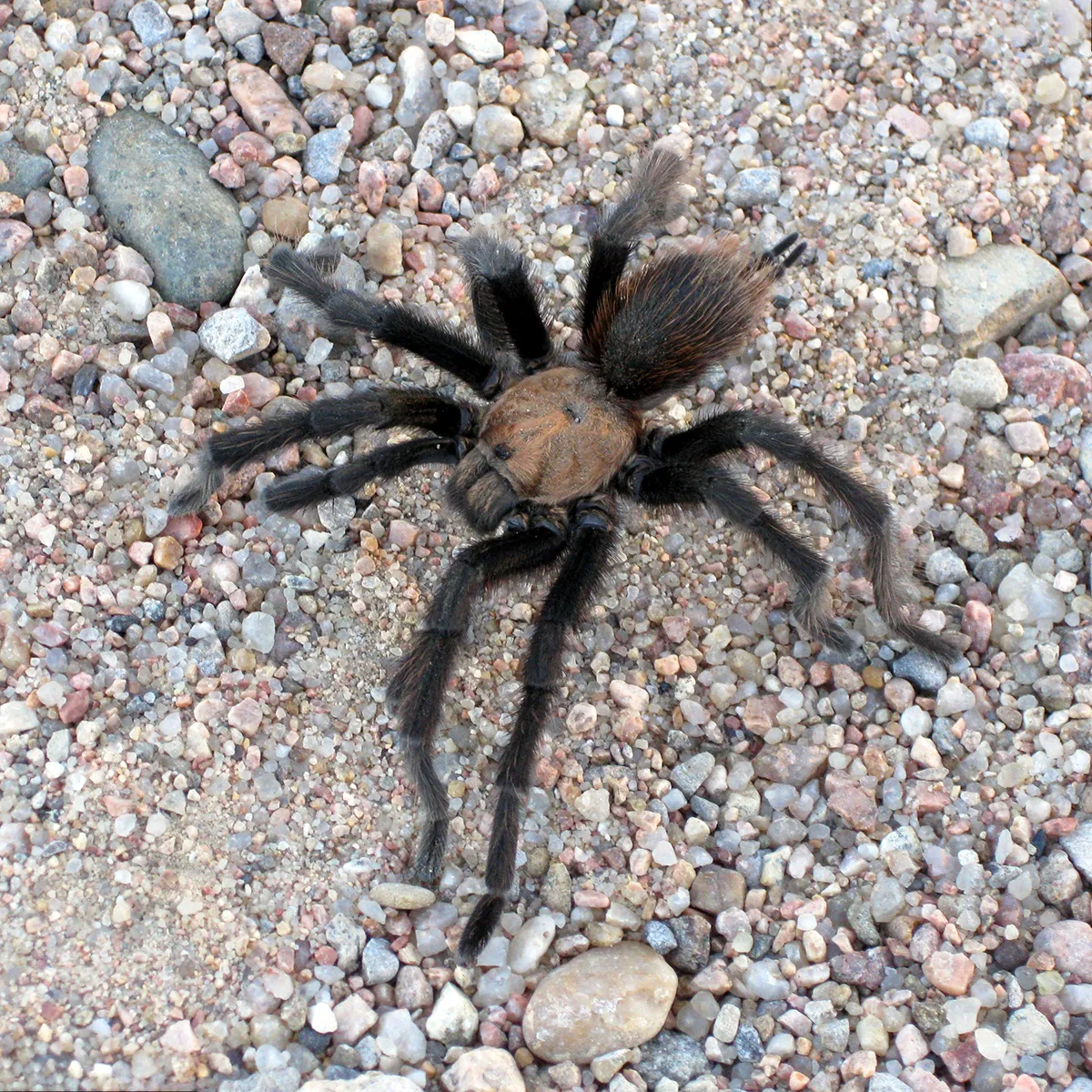
Observing tarantulas in their natural habitat is a rewarding experience. When searching for them, move slowly and quietly, and be patient. Scan the ground and look for burrows or signs of activity. If you find a tarantula, observe its behavior from a distance, noting its movements and any interactions with its environment. Pay attention to the surrounding habitat and look for other signs of wildlife. It’s also a good idea to bring a pair of binoculars to get a closer look without disturbing the spider. Respecting their space and observing them from a safe distance will allow you to appreciate these incredible creatures. Learning to observe them is crucial for a great experience.
Respecting Tarantulas
Respect for tarantulas and their habitat is essential for their conservation. Avoid disturbing their burrows or attempting to catch them. Refrain from using pesticides or herbicides in areas where tarantulas live. Support conservation efforts by educating yourself and others about these spiders and their importance in the ecosystem. By understanding and appreciating these creatures, you can help ensure their survival for future generations. It is important to always respect tarantulas.
Conservation Status of Tarantulas in Central Texas
The conservation status of tarantulas in Central Texas is generally considered stable, but their populations face several threats. Habitat loss due to urbanization, agriculture, and development is a significant concern. Pesticide use and climate change can also negatively affect tarantula populations. Understanding these threats is crucial for developing conservation strategies. It is important to protect their habitat and ensure the spiders’ survival. Supporting responsible land management practices and advocating for conservation efforts are critical for preserving these magnificent creatures. The conservation status of tarantulas is crucial for their survival.
Threats to Tarantula Populations

Tarantula populations face various threats that can impact their survival. Habitat destruction, driven by human activities, is a primary concern. The loss of natural habitats forces tarantulas to relocate, exposing them to predators and reducing their food supply. The use of pesticides and herbicides in agriculture can also harm tarantulas directly or indirectly by reducing their prey. Climate change, with its effects on weather patterns, can disrupt their life cycle and reduce their food supply. Addressing these threats requires a collaborative approach, involving land management practices, public education, and conservation initiatives. Reducing the threats to tarantulas will ensure they survive.
